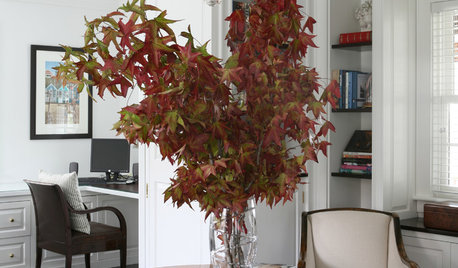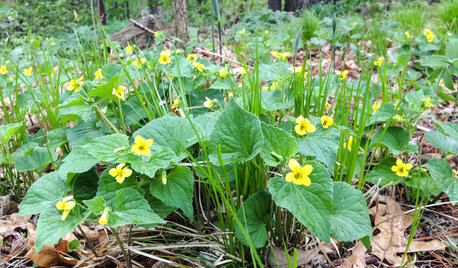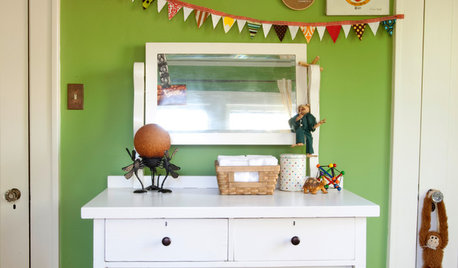yellow leaves on my green beans
okiefamily
14 years ago
Related Stories

SUMMER FRUITS AND VEGETABLESSummer Crops: How to Grow Beans
Grow your own beans for amazing variety and healthy, convenient produce all summer
Full Story
DECORATING GUIDESPaint Color Ideas: 8 Uplifting Ways With Yellow and Green
Dial up the cheer with yellow and green paint combinations sure to cast off winter doldrums
Full Story
DECORATING GUIDES9 Easy Ways to Decorate With Autumn Leaves
Give your home a burst of color that can be used Halloween through Thanksgiving
Full Story
GARDENING GUIDESWhat's Wrong With My Plant? Leaves Often Hold the Clues
Learn how to identify common plant ailments by reading their leaves
Full Story
FALL GARDENING5 Ways to Put Fall Leaves to Work in Your Garden
Improve your soil and yard the organic way with a valuable garden booster that grows on trees
Full Story
LAUNDRY ROOMSRoom of the Day: The Laundry Room No One Wants to Leave
The Hardworking Home: Ocean views, vaulted ceilings and extensive counter and storage space make this hub a joy to work in
Full Story
GARDENING GUIDESGreat Design Plant: Viola Pubescens Dots Woodlands With Yellow
Plant downy yellow violet in eastern U.S. woodland gardens for its heart-shaped leaves and bright yellow flowers
Full Story
DECORATING GUIDESBean There, Done That: Coffee Table Alternatives
Get creative with these ideas for salvaged and DIY pieces that will get people talking
Full Story
GARDENING GUIDES10 Easy Edibles for First-Time Gardeners
Focus on these beginner-friendly vegetables, herbs, beans and salad greens to start a home farm with little fuss
Full Story
GREENColor Guide: How to Work With Green
With as many green hues as leaves in a forest, it's easy to find one that grows on you
Full StorySponsored
Columbus Area's Luxury Design Build Firm | 17x Best of Houzz Winner!
More Discussions






mulberryknob
Okiedawn OK Zone 7
Related Professionals
Folsom Landscape Architects & Landscape Designers · Lake Oswego Landscape Architects & Landscape Designers · Owings Mills Landscape Architects & Landscape Designers · Zion Landscape Architects & Landscape Designers · Fuquay-Varina Landscape Contractors · Lancaster Landscape Contractors · Rockville Landscape Contractors · Saint John Landscape Contractors · Silver Firs Landscape Contractors · Commerce City Decks, Patios & Outdoor Enclosures · Fresno Decks, Patios & Outdoor Enclosures · Hockessin Decks, Patios & Outdoor Enclosures · Lebanon Decks, Patios & Outdoor Enclosures · Overland Park Decks, Patios & Outdoor Enclosures · Windsor Decks, Patios & Outdoor EnclosuresokiefamilyOriginal Author
Okiedawn OK Zone 7
okiefamilyOriginal Author
Okiedawn OK Zone 7